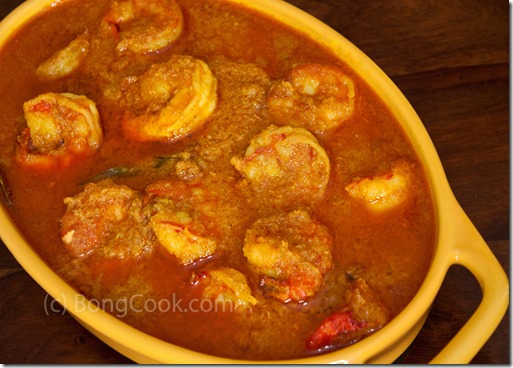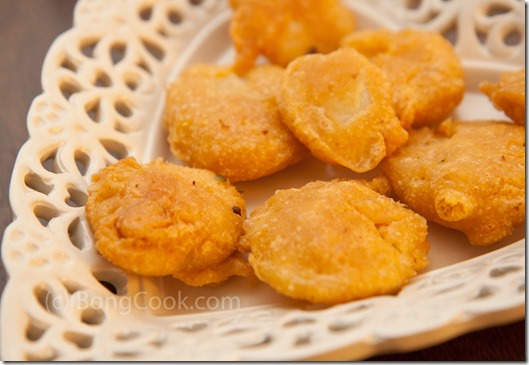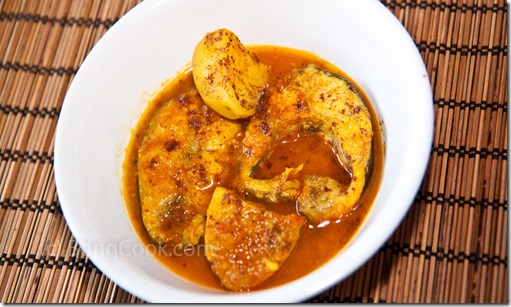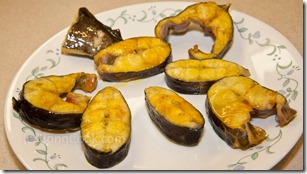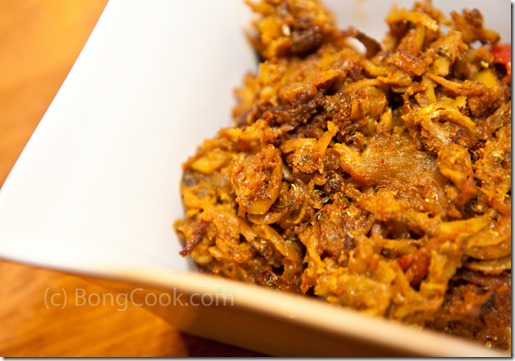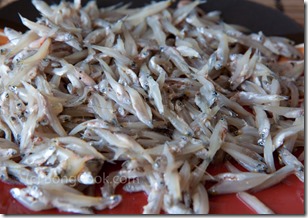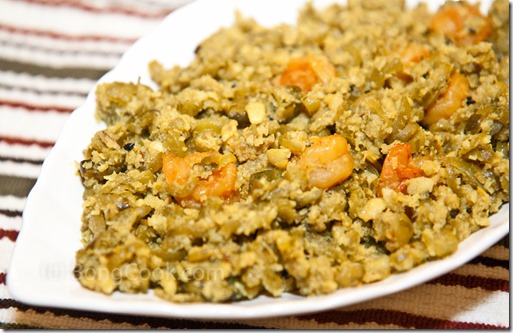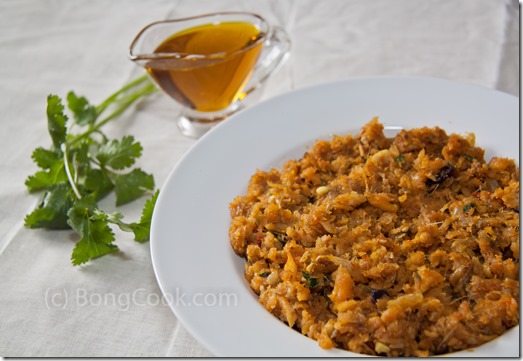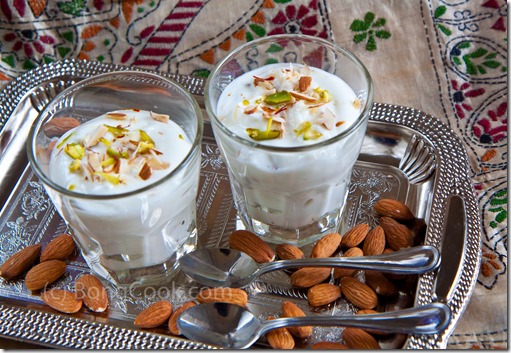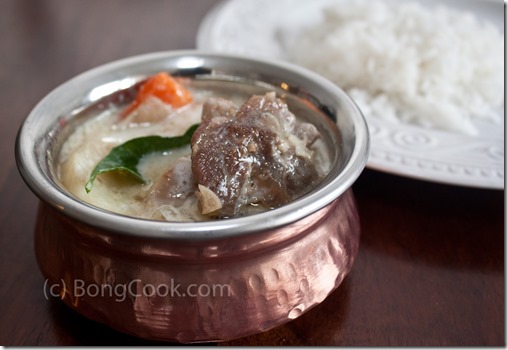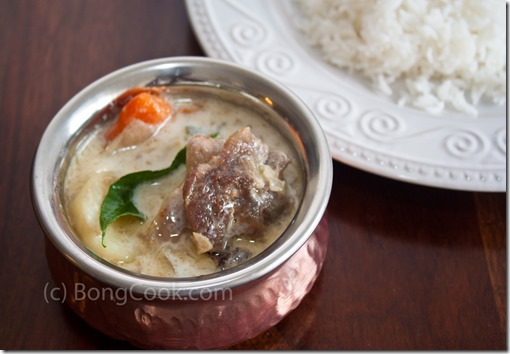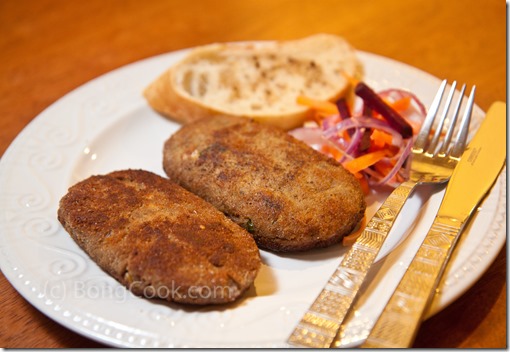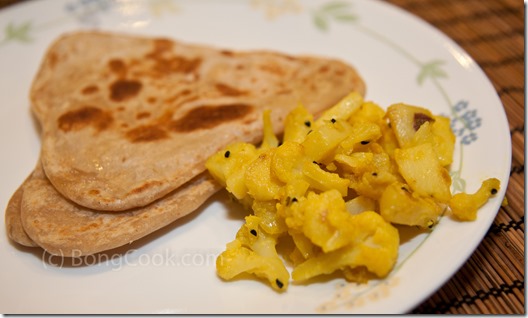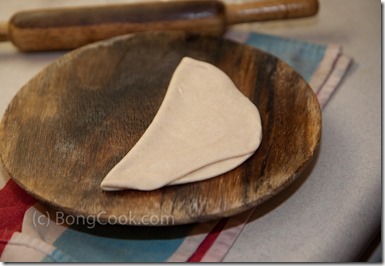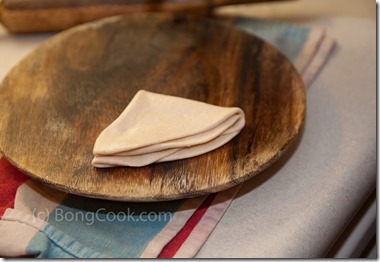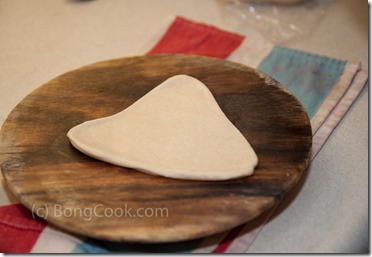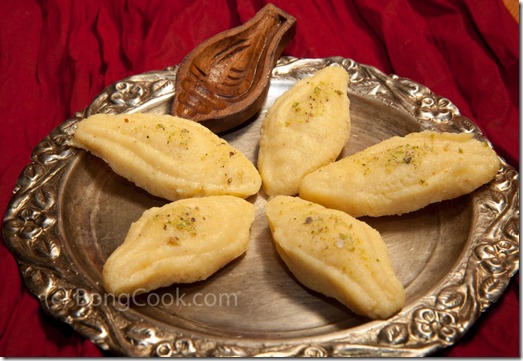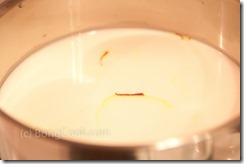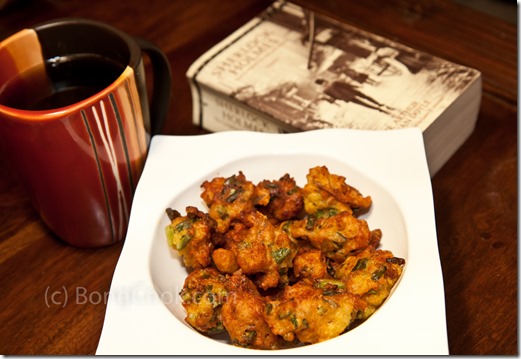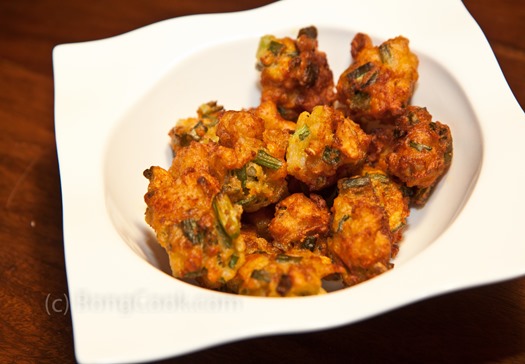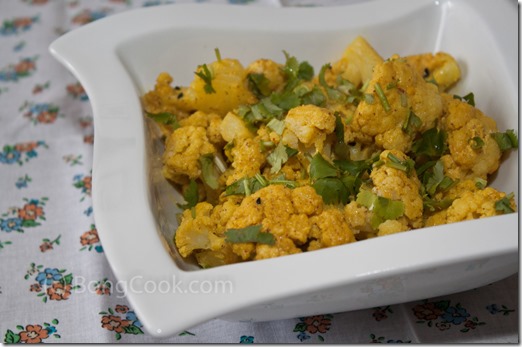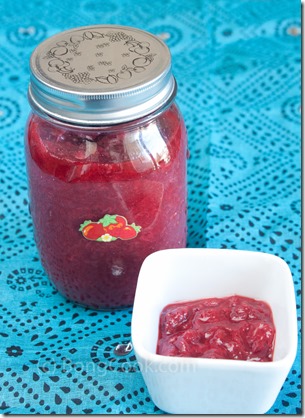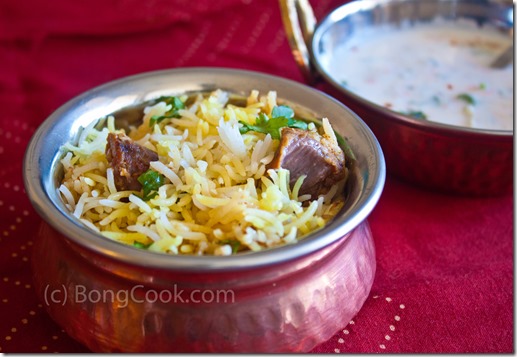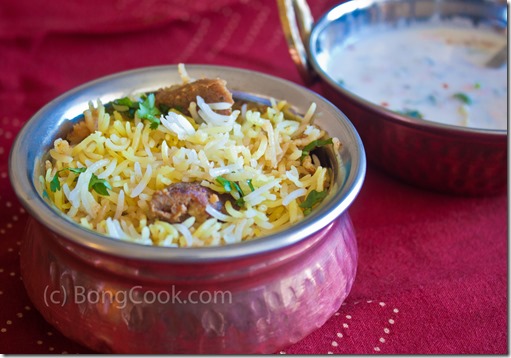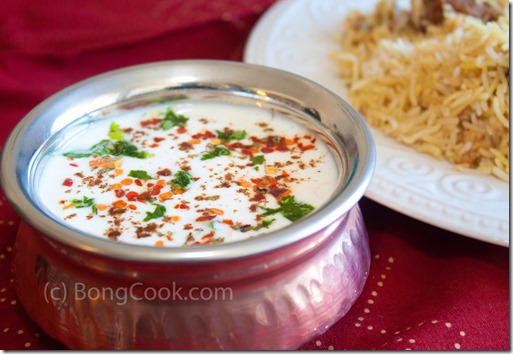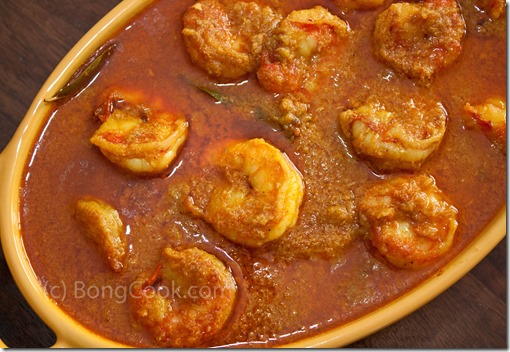
This was so tasty that right now while writing this post I am having the urge to make it again :). However, this is one of those things in which you cannot compromise on the quantity of oil and hence this is not something we can eat everyday.
I made this for some guests who were coming over. However, they got stuck on the earlier course of Muri-Ghonto and barely arrived to the Prawn Korma. So there were a lot of left overs which we didn’t really mind.
Ingredients
- 2lb. large tiger shrimps/prawns
- 1 small onion ground into fine paste
- 1/4 cup fine paste of fresh or frozen coconut
- 1 large ripe red tomato
- 1tbsp. ginger paste
- 1tsp. garlic paste
- 1/2tsp. green chili paste
- 1tsp. Kashmiri red chili powder (Paprika)
- 2tsp. turmeric powder
- 2 – 3 bay leaves
- 1tsp. sugar
- 1tbsp. clarified butter (Ghee)
- 6 – 7tbsp. mustard oil ( Yes, you need more oil to make this)
- 1tsp. freshly ground garam masala powder (Clove, cinnamon, green cardamom, black cardamom)
- Salt to taste
Procedure
Start with cleaning and deveining. If you want, you can keep the head and tail on. My daughter and husband don’t enjoy those so I removed them. Instead to extract the maximum flavor out of it, I boiled 4 cups of water with the shell, head and tail for 30 minutes on low heat and keep the strained prawn stock. I used this stock instead of water to make the gravy.
Smear the prawns with salt and turmeric and keep aside for 15 minutes.
Heat mustard oil in a kadai and fry the prawns in batches till they turn pink. Remove them.
Temper the left over oil with bay leaf and add sugar to it. Lower the heat and let the sugar caramelize. Add onion paste along with turmeric powder, red chili powder and a tsp. of garam masala to it and fry on low heat for about 5 – 6 minutes.
Now one by one add ginger, garlic, tomato and chili paste to it. Sauté and cook them on low heat for another 5 – 6 minutes. Check whether all raw smell subsides or not. If not cook for another few minutes.
Next to go in is coconut paste. Mix everything well and fry the masala on low heat for few minutes. If needed you may add little water to it so that the spices don’t stick to the vessel.
Season it with salt and sugar. Soon you will see a thin line of oil is separated out from the spices. This is the time you add one and half cup of water ( I used prawn stock) to it. Stir well and let it come to a rolling boil.
Gently slide the fried prawns in and cook for 3 – 5 minutes. Overcooking makes prawn stiff so be careful.
Taste and check the seasoning, if required adjust accordingly.
Add a dollop of ghee and finish it off with a pinch of garam masala powder.
